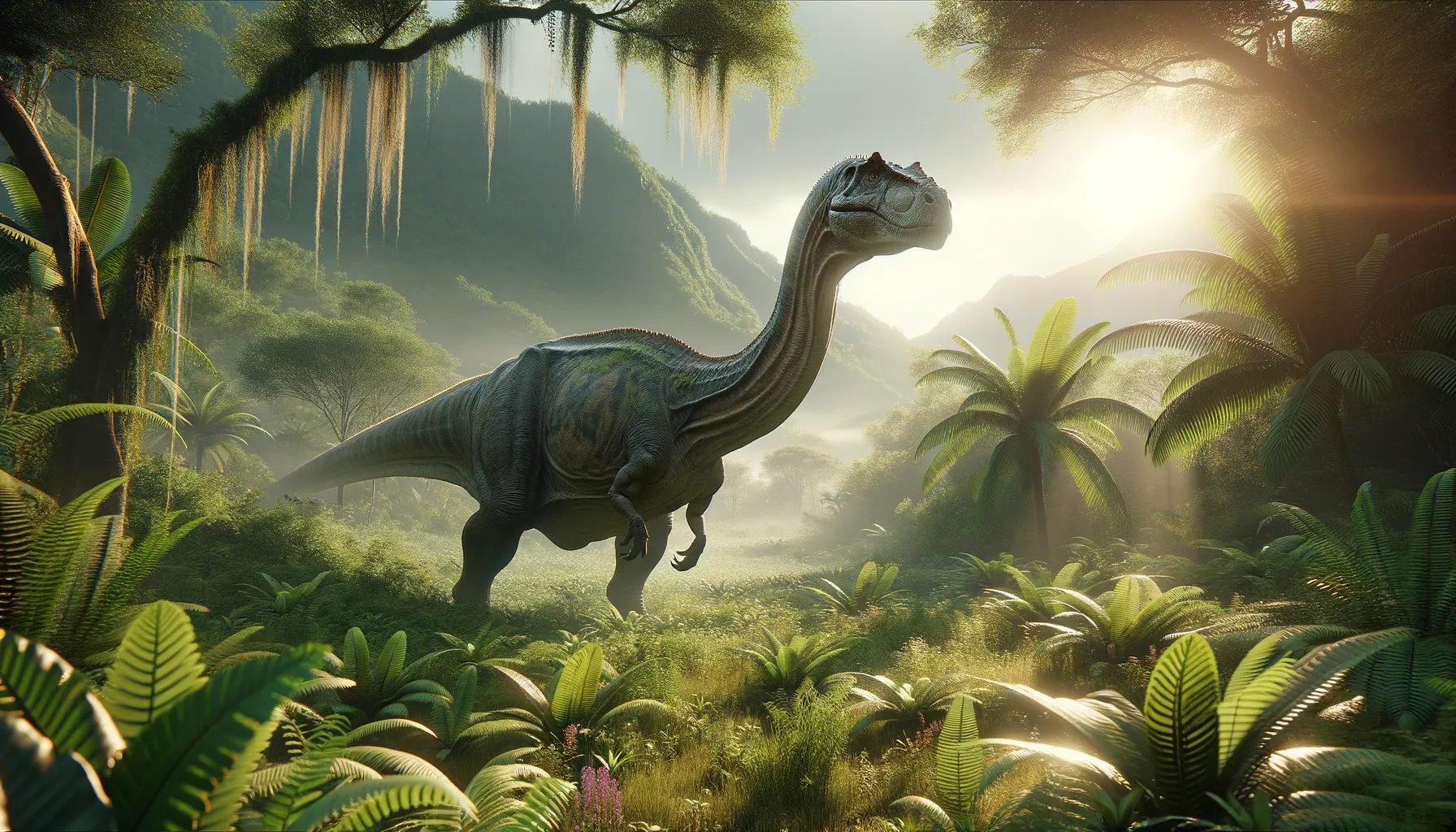
Cathetosaurus
A gentle giant of the Jurassic era.
Period
Jurassic
Length
Could reach lengths of approximately 16 meters.
Height
Estimated to be up to 4 meters tall.
Weight
Weighed several tons.
Cathetosaurus was a large, plant-eating dinosaur that roamed the earth during the Jurassic period. Recognized for its long neck and massive size, it belonged to the family of sauropods. Its fossils were first discovered in what is now known as Utah, offering insight into the diverse dinosaur fauna of that time. The Cathetosaurus would have grazed in lush, vegetative areas, using its height to reach leaves other creatures could not.
Diet
Cathetosaurus was an herbivore, primarily eating plants. Its long neck allowed it to reach high vegetation, while its broad teeth were adapted for grinding leaves.
Hunting
As an herbivore, Cathetosaurus did not hunt for prey. Instead, it foraged for plants and likely traveled in herds to safeguard against predators.
Environmental challenges
Cathetosaurus faced threats from predators, demanding constant vigilance. They also contended with fluctuations in food availability due to seasonal changes. As massive creatures, they needed large amounts of foliage, making habitat stability crucial for their survival.
Speed
Relatively slow-moving.
Lifespan
Estimated to be several decades.
First discovery
Discovered in Utah and first described in the 1990s.
Fun Facts
- Cathetosaurus was a type of dinosaur known as a sauropod, which are famous for their long necks and tails.
- This dinosaur lived during the Late Jurassic period, roughly 150 million years ago.
- Cathetosaurus was a herbivore, meaning it fed on plants and likely used its long neck to reach leaves high in trees.
- The name 'Cathetosaurus' comes from Greek and means 'straight lizard,' referencing the shape of its bones.
- Fossils of Cathetosaurus have been found primarily in the western part of the United States.
- Unlike some of its massive sauropod relatives, Cathetosaurus was relatively smaller in size.
- Its fossil remains help scientists understand more about the diversity and evolution of sauropods during the Jurassic era.
Growth and Development
Starting life from sizeable eggs, young Cathetosaurus grew rapidly. Growth spurts occurred particularly in the juvenile phase, fueled by a constant supply of plant food. These dinosaurs needed to reach a significant size to better protect themselves against predators.
Habitat
Cathetosaurus lived in lush, forested environments where vegetation was abundant. These environments would have been warm and humid, supporting diverse plant life. They likely thrived in regions that provided access to a mix of tall trees and low-lying vegetation.
Interaction with other species
Cathetosaurus likely lived in herds, which provided safety in numbers against predators like Allosaurus. Coexisting with other large herbivores, they may have competed for resources but also benefited from shared protection strategies.
Natural lifespan
Cathetosaurus could naturally live up to 70 years.
Reproduction
Reproduction likely involved laying eggs in nests made on the ground in clusters. The number of eggs per clutch would be substantial, a strategy to ensure the survival of at least some offspring. Hatchlings were independent from a young age.
Social behaviour
Cathetosaurus exhibited social behaviors typical of herd-dwelling dinosaurs, moving and foraging in groups. This behavior offered safety from predators and facilitated shared knowledge of the environment. Communication might have been through vocalizations or body language.
Fossil locations
Fossils of Cathetosaurus have primarily been found in Utah, specifically in the Morrison Formation. These sites provide essential data for understanding the ecology and environment of the Jurassic period in North America.
